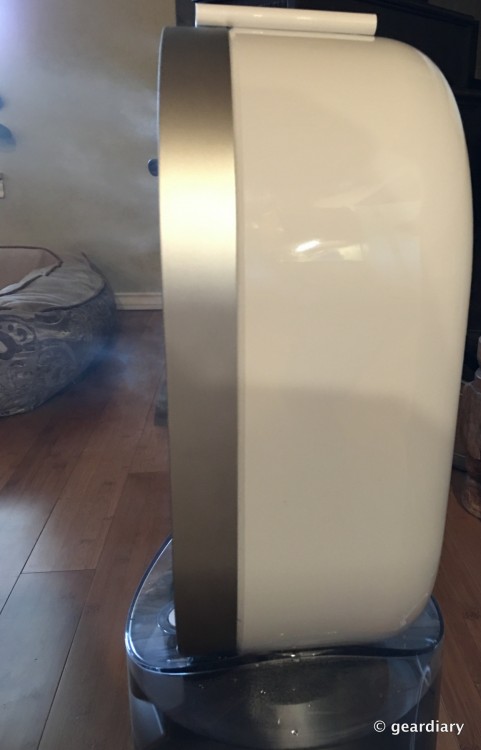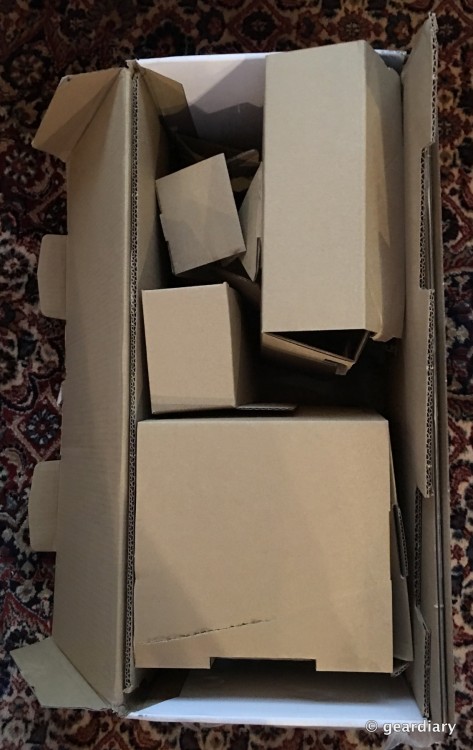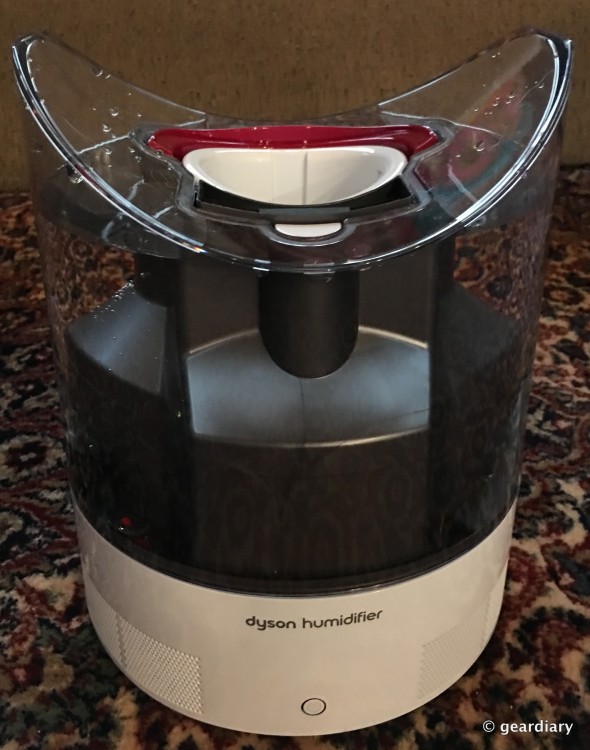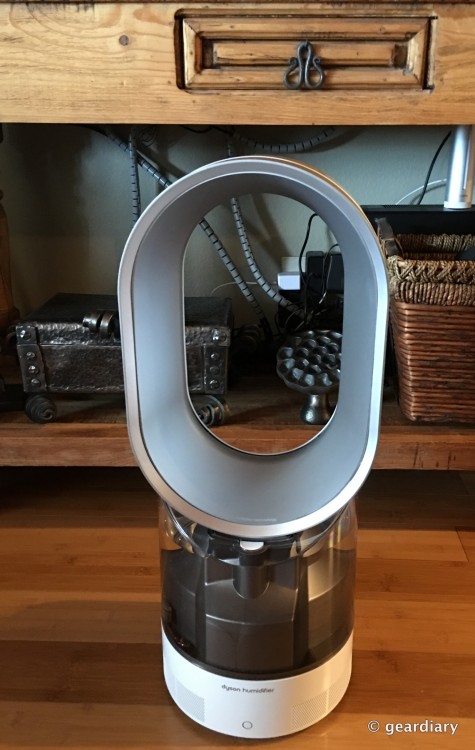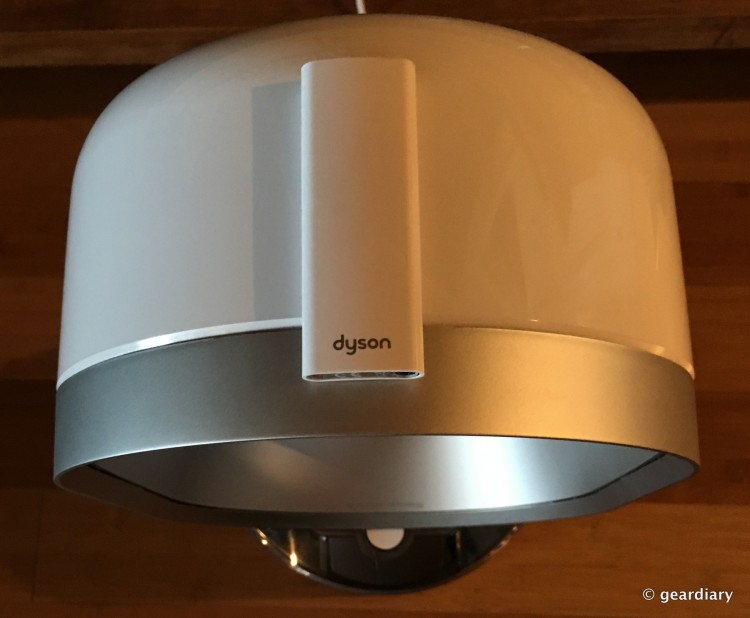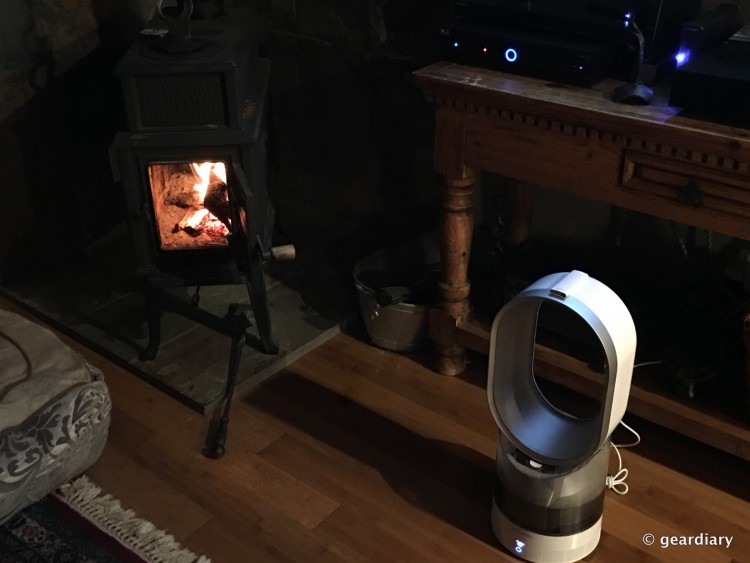Unless you live in a humid climate, it’s almost always a good idea to have a humidifier running in your home. They can help with everything from breathing issues, to preventing sinus infections, or providing relief from dry skin and hair. But knowing which humidifier to buy can be tricky. I’ve tried several brands; my favorite is the Dyson Humidifier.
Some of the more drastic signs that you might need a humidifier can include dry skin, dry eyes, bloody noses, painful cracks in your fingertips, dry hair, and cracked lips. When you have a properly operating humidifier, some of the benefits include easing your dry nasal passages, making it easier to sleep at night; preserving your voice by keeping your vocal chords hydrated; keeping your skin and lips moisturized; reduced snoring (because it’s keeping your nose and soft palate moisturized); lessened potential for static electricity; and happier house plants. In other words, the downsides are few.
According to the Mayo Clinic, “humidifiers can help soothe these familiar problems caused by dry indoor air. Humidifiers can also help ease symptoms of a cold or another respiratory condition.” But you have to be careful, because “although useful, humidifiers can actually make you sick if they aren’t maintained properly or if humidity levels stay too high. If you use humidifiers, be sure to monitor humidity levels and keep your humidifier clean. Dirty humidifiers can breed mold or bacteria.”
That’s gross, but it makes perfect sense.
The Dyson Humidifier’s features include:
- That it will kill 99.9% of bacteria – Ultraviolet Cleanse technology kills bacteria before hygienic mist and hydrated air is projected into the room
- It uses patented Air Multiplier technology – Generates long-range mist projection to distribute hydrated air evenly
- It has intelligent Climate Control – The Dyson humidifier uses Intelligent Climate Control to measure both the temperature and the moisture in the air to create a comfortable environment
- It provides whole room hydration – Projects hygienic mist and hydrated air evenly throughout the room
- It will give you night-long comfort – Sleep timer and up to 18 hours of continuous use
Included in the box are the three pieces that make up the humidifier, a small remote control, a power cable, the operating manual, and warranty paperwork.
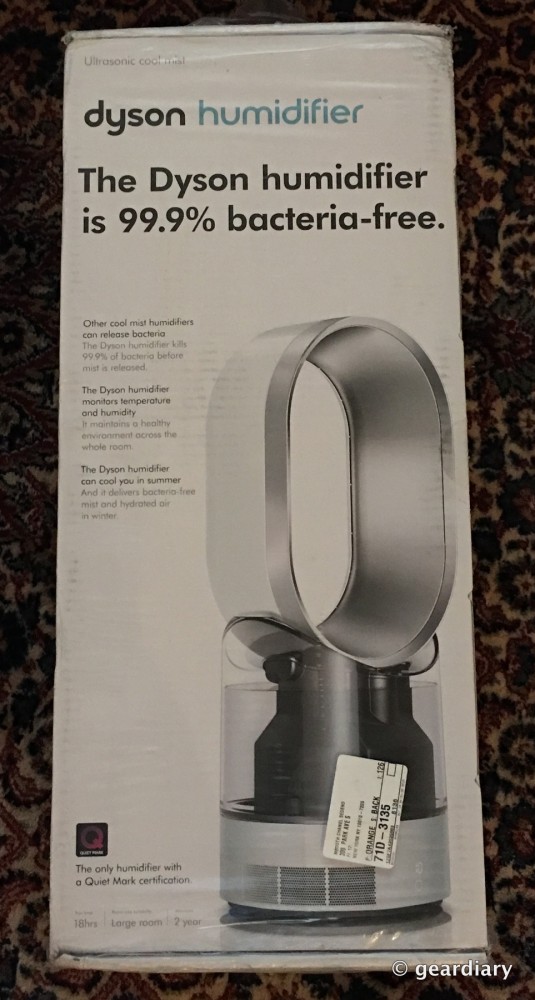
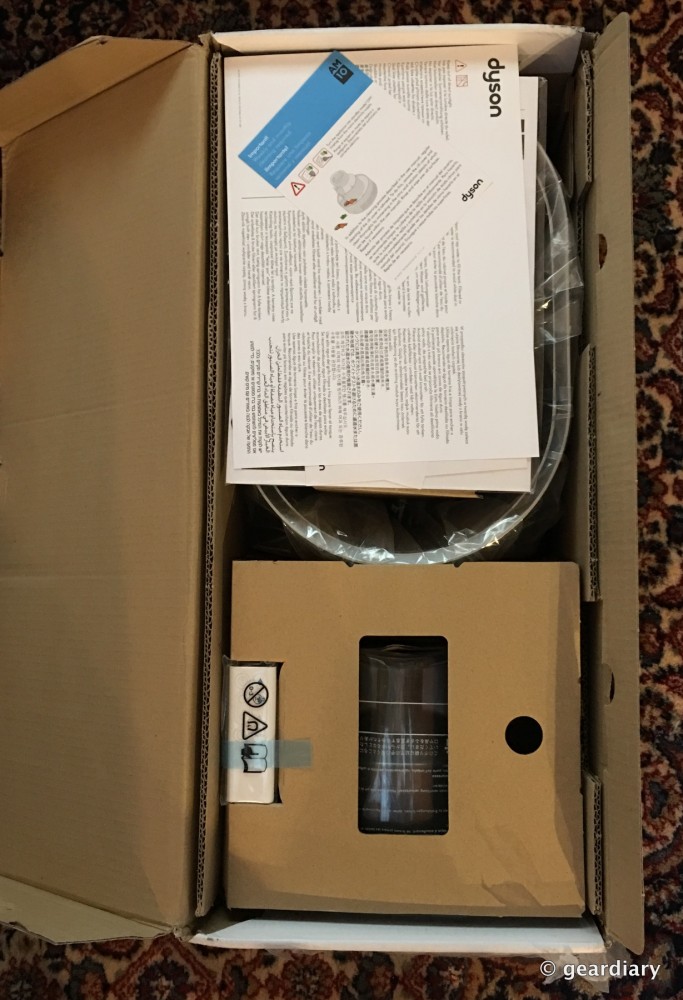
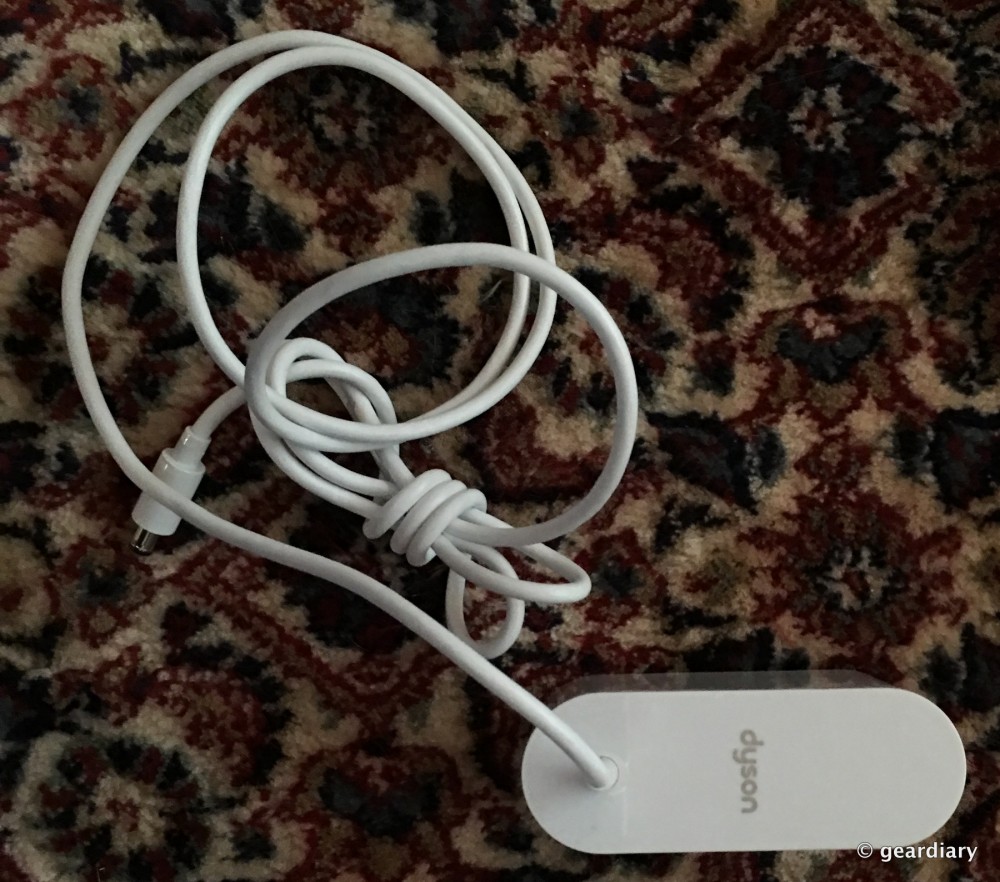

I want to give kudos to Dyson for making every single bit of packing recyclable. Not shown are the thin plastic bags which wrapped the components, and even they are recyclable.
So let’s put the humidifier together, and take a look at how it all works together.
The first piece is the white polycarbonate base; this is where the water treatment occurs when water is passed over a UV-C emitter to “ensure that it is 99.9% bacteria free before misting commences.” This process takes approximately 3 minutes.
Dyson’s patented technology: Unlike other humidifiers, which can harbor and spread bacteria, every drop of water in the Dyson humidifier is exposed to an ultraviolet light – twice, killing 99.9% of bacteria in the water.
Using an Intelligent Climate Control, the Dyson humidifier is able to measure both the temperature and the moisture in the air. One press of the remote, and the machine will create a comfortable, hygienic environment. The machine runs for up to 18 hours on a single tank of water.
Speaking of patents, the Dyson AM10 Humidifier has 275 patents and 130 patents pending; “Dyson’s Ultraviolet Cleanse™ technology is protected by five patents,” and the humidifier cost over $60.4 million to develop.
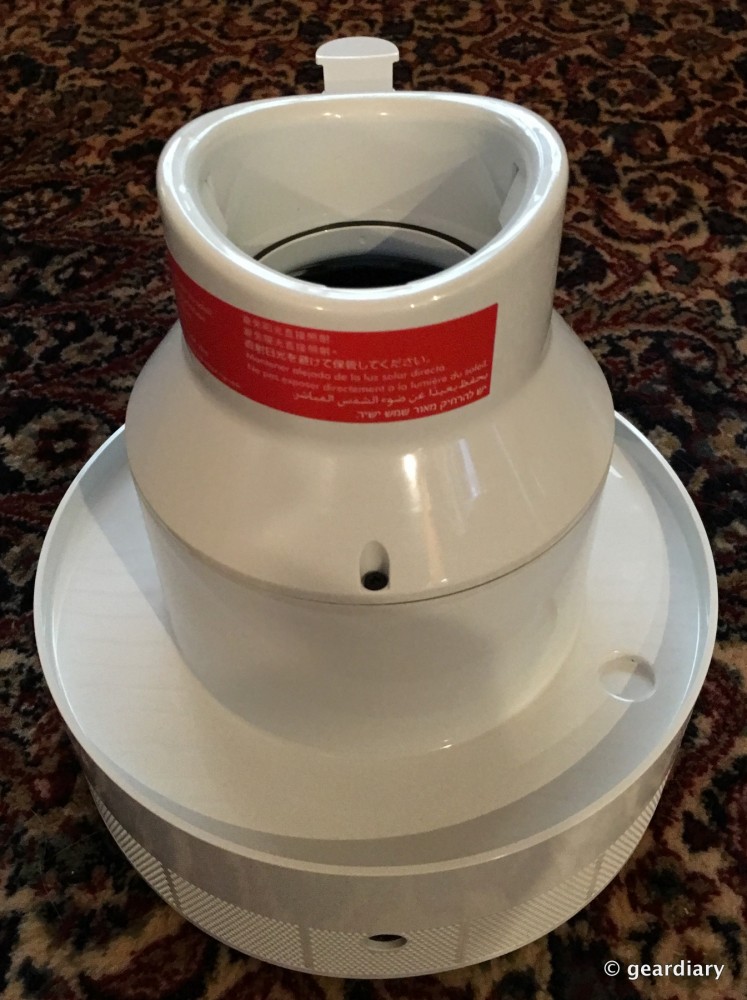
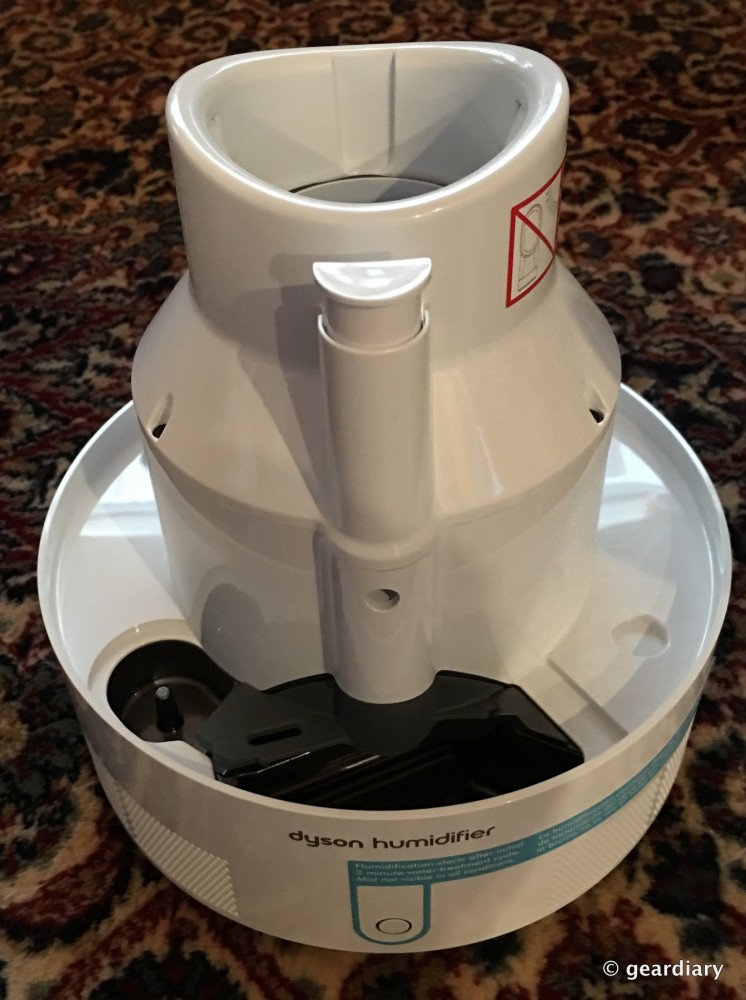
This is the tank, and it holds what looks like about a gallon of water. While it’s not necessary to use bottled distilled water, if you live somewhere with extremely hard water (as I do), it is a good idea to use filtered water so that you don’t get as bad lime deposits as you would otherwise. You’ll still need to do weekly and monthly maintenance on the humidifier to keep it in optimal operating condition no matter what type of water you use.
On the bottom of the tank, there is a red screw cap that gets removed when filling water and replaced after the tank is filled.
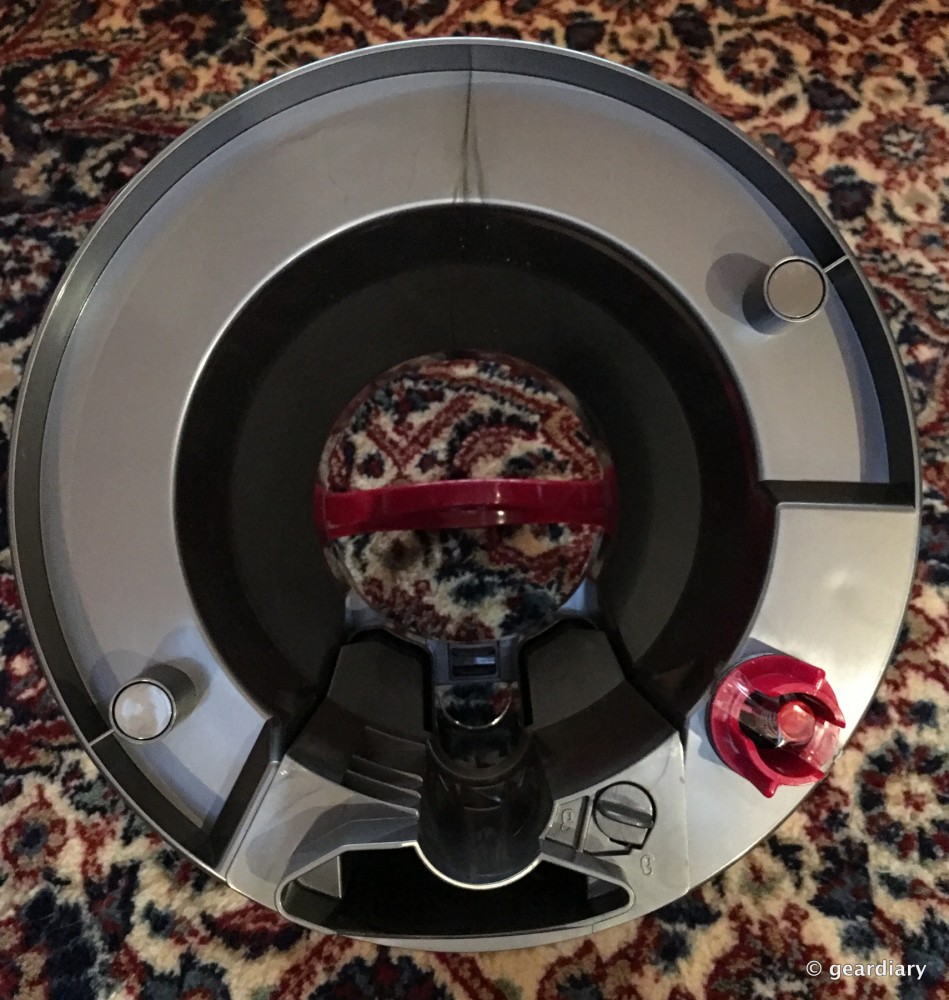
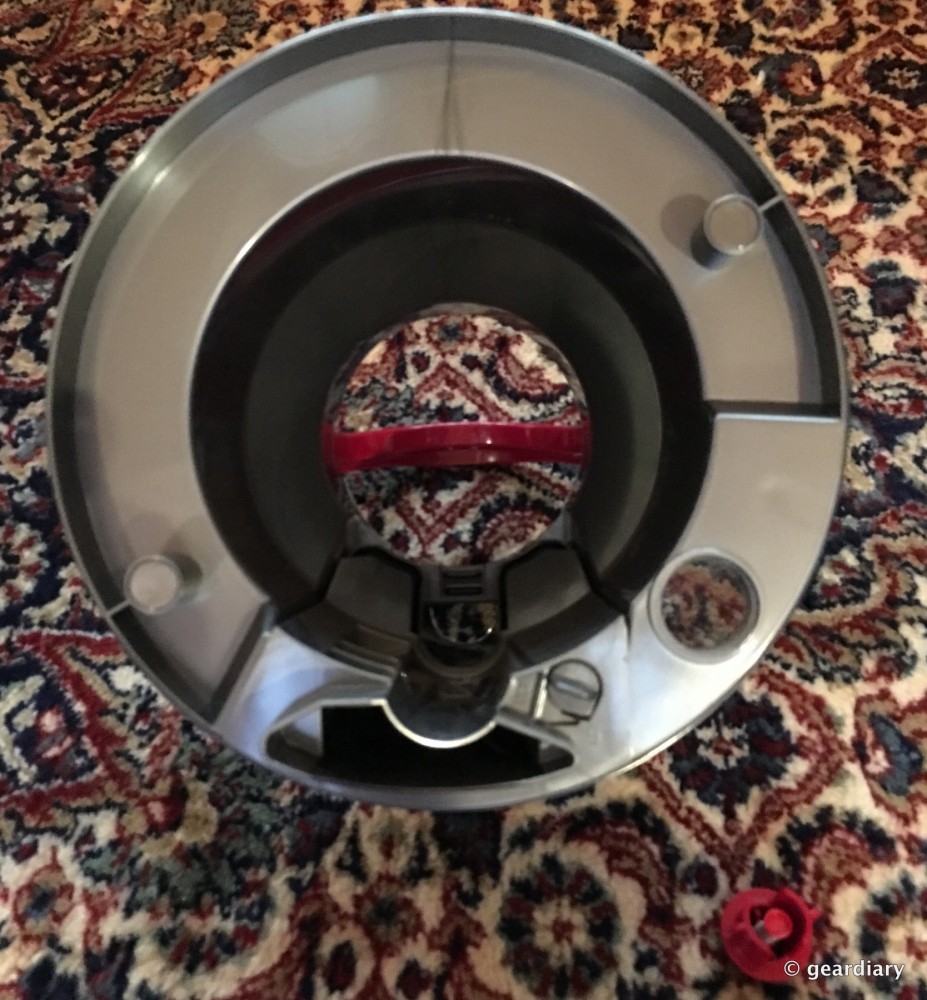
A built-in handle at the top of the tank makes the unit easier to carry when walking to the sink and back.

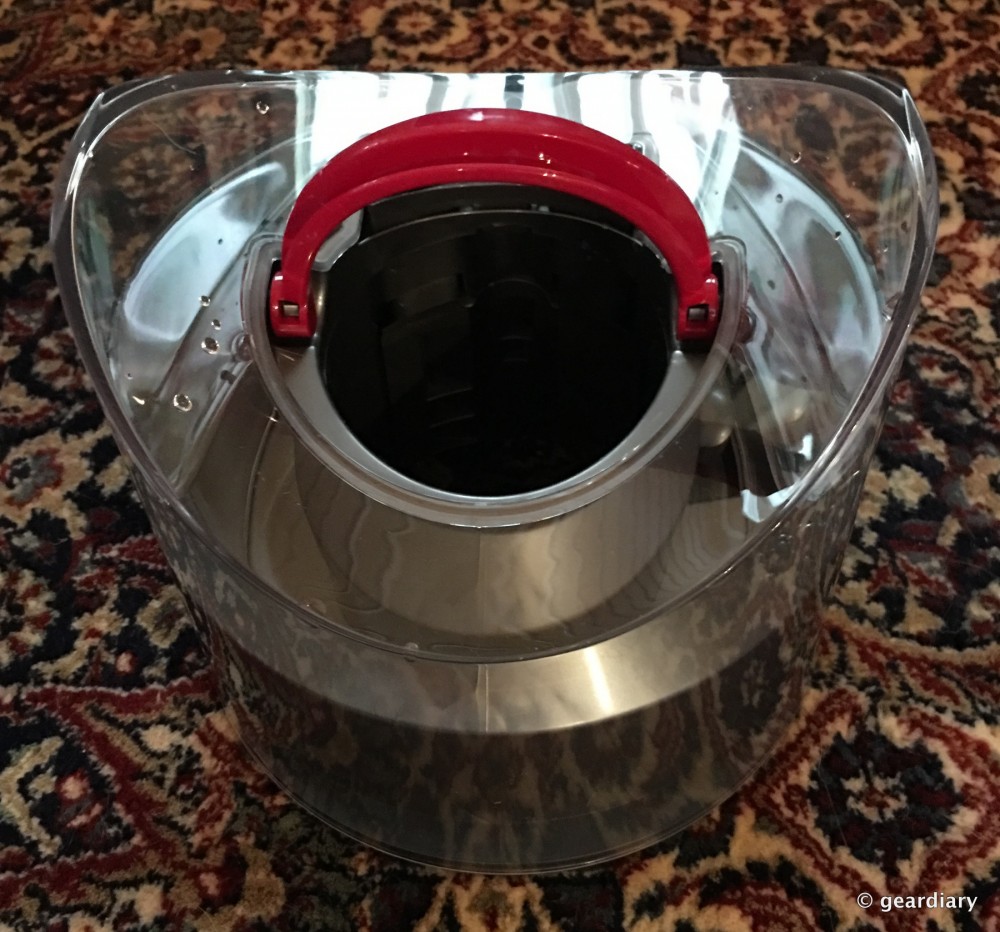
The tank sits right on top of the base. It’s important to make sure that the base is level because the humidifier will not operate otherwise.
Next you place the loop amplifier on the top of the tank; you’ll push down until you hear a click.
It’s important to place the humidifier where it can face the room you want it working in; Dyson recommends a corner or near the AC vent or heater so that the humidifier can effectively circulate treated air; it should always be at least 3.2′ from any wall, and if you want to prevent a cooling effect on people from the mist produced, you’ll want to place it at least 3.2′ feet from any people.
The humidifier’s remote is simple to use, but it packs a lot of features into only a few buttons. At the top left, there is an on/off button. On the top right is a button that toggles between fan and humidifier modes. The middle left button is for airflow; you can increase or decrease it between 1 and 10. On the middle right is the manual humidity control, where you can increase or decrease the humidity produced from 30 – 70%. The bottom left button is the sleep timer; you can set it to run the humidifier anywhere from 15 minutes to 9 hours. The bottom right button is for auto mode, which allows the Dyson to automatically select a comfortable humidity setting for your room.
Like the Dyson Cool AM07 Tower Fan I reviewed last year, the remote attaches magnetically to the curved top of the loop amplifier for convenient storage.
Once you’ve assembled all of the components and plugged in the humidifier, it’s time to turn it on. When you first press the power button, you’ll see a three-minute long lighting sequence occur on the LCD-style white glowing numbers above the blue-ringed power button; that’s to let you know that the AM10 is treating the water. By the way — a blue ring around the power button means that it is in humidity mode, a white ring means that it is in fan mode.
Once the humidifier starts producing mist, you’ll be treated to this … lovely, fine mist that enters directly into the room’s air and isn’t spit out onto the floor. The humidifier is extremely quiet, and it is certified asthma & allergy friendly.
The Dyson humidifier is the first of its kind to earn the asthma & allergy friendly™ Certification from the Asthma and Allergy Foundation of America (AAFA). To achieve the asthma & allergy friendly™ Certification, the Dyson humidifier underwent an independent program of rigorous tests. These tests cover the humidification and humidity level maintenance, sanitization and disinfection performance, and the effects on pre-existing contamination. Dyson machines meet and exceed the strict criteria for all of these tests.
Maintenance of the humidifier is imperative, not just so that it will continue working properly, but to also to prevent scale buildup, and to make sure that you don’t start harboring some random bacteria or mold colony (ick). You should create your own cleaning solution composed of 1 ounce of citric acid and 1 liter of water to use once a week, wiping down the air loop amplifier while paying close attention to the air gaps. You’ll also need to empty the water in the tank and rinse and wipe all of the surfaces with your cleaning solution. The last step is to empty the trough in the base that accepts water from the tank, and then wipe over all of the surfaces with the cleaning solution. This little bit of maintenance will ensure that your AM10 continues to properly operate.
Once a month (and before or after storage), a slightly deeper cleansing regimen is required. Again you’ll use the citric acid solution, but this time you’ll unclip the loop amplifier’s bezel, wiping both sections down with the citric acid solution. Next you’ll need to empty the water tank, and this time you’ll remove the water chimney by thoroughly rinsing and soaking it in the citric acid solution for 15 minutes. You’ll also need to remove the tank’s seal, soaking it in the citric acid solution for 15 minutes, as well. Then you’ll fill the tank with the solution, replacing the red cap, and then shaking it for 30 seconds. The last step is emptying the base’s trough of any water, then filling it with the citric acid solution (making sure that the UV-C emitter and piezo are covered) and allowing it to sit for 15 minutes. After you’ve drained the trough and reassembled everything, you’ll wipe the entire humidifier down with a lint-free cloth.
I know that this may seem like a lot of maintenance steps to perform, but look at it like this: you are actually breathing the mist produced by the AM10. You want that mist to be the purest, healthiest moisture you can breathe, right? And honestly, it’s not that big of a deal to complete all of these steps.
When your Dyson AM10 Humidifier is operating properly, you’ll feel a definite change in the quality of the air that you are breathing and living in; I noticed the benefits after only a day or two — not only did my hair feel less dry and staticky, my throat wasn’t as dry, and I could breathe better at night. We are in prime allergy season right now, so I’m absolutely grateful for anything that can help.
I like that the Dyson can run for up to 18 hours on a single fill;
The dirty secrets of humidifiers: Despite their possible health benefits, existing humidifiers can be unhygienic. Since they don’t treat the water, bacteria in the tank can be transmitted directly into the room, where it can be inhaled. In addition, many don’t distribute humidified air evenly around the room – meaning you don’t feel the benefit.
Dyson’s patented technology:
Unlike other humidifiers, which can harbor and spread bacteria, every drop of water in the Dyson humidifier is exposed to an ultraviolet light – twice, killing 99.9% of bacteria in the water.
A humidifier can provide many benefits no matter what the season, but so many people have either been burned by puny humidifiers that don’t make a real difference in a large room’s air quality, or crappy humidifiers that work well for a few days and then start spitting water on the floor. The Dyson AM10 is powerful, effective, and it produces real results.
The Dyson AM10 Humidifier retails for $499.99 (includes a two-year warranty on partslabor), and it is available directly from the manufacturer as well as from other retailers including Amazon [affiliate link]. It comes in the following color combinations: white & silver, iron & blue, and black & nickel.
Source: Manufacturer supplied review sample
What I Like: Easy to fill and operate; A perfect, fine mist is disbursed into the air of your room (no puddles on your floor); Easy to take apart for cleaning; Can run continuously for up to 18 hours; Looks great in any home; Produces results that you can feel!
What Needs Improvement: I haven’t found any issues with the humidifier, and I have been using it for several weeks
